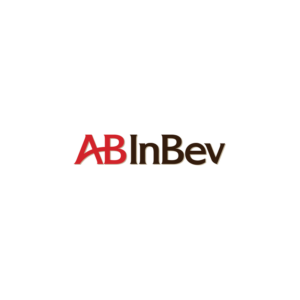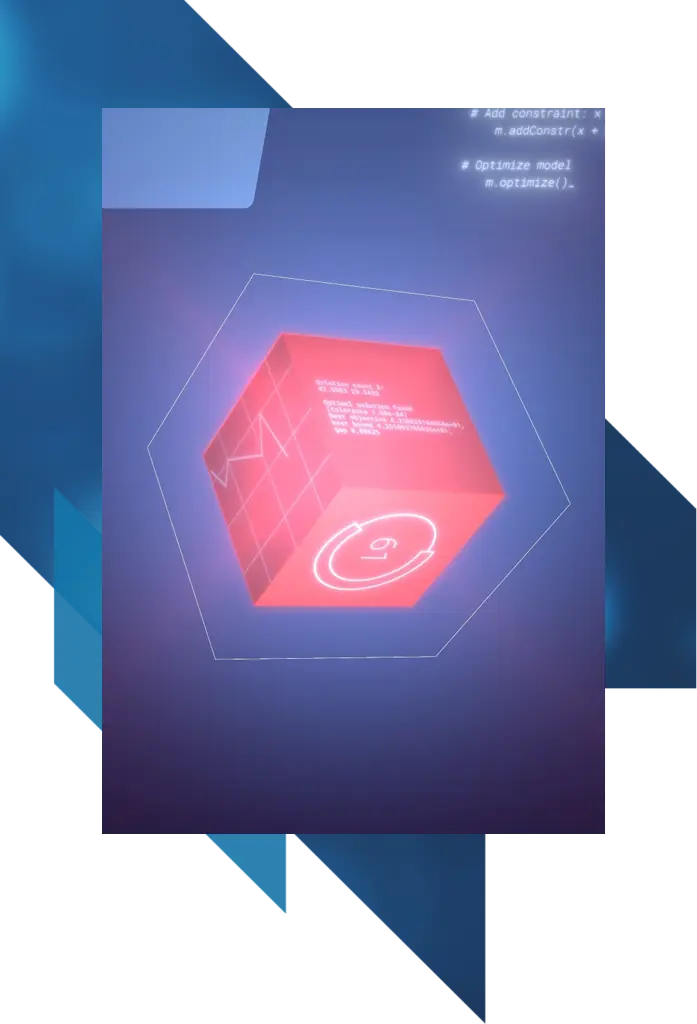“Using mathematical optimization to solve the tail assignment problem brings large savings on a yearly basis.”
Solene RichardData Science and Operational Research Team Leader, Air France KLM
We use cookies on our website to give you the most relevant experience by remembering your preferences and repeat visits. By clicking “Accept All”, you consent to the use of ALL the cookies. However, you may visit "Cookie Settings" to provide a controlled consent.
Necessary cookies are required to enable the basic features of this site, such as providing secure log-in or adjusting your consent preferences. These cookies do not store any personally identifiable data.
Functional cookies help perform certain functionalities like sharing the content of the website on social media platforms, collecting feedback, and other third-party features.
Analytical cookies are used to understand how visitors interact with the website. These cookies help provide information on metrics such as the number of visitors, bounce rate, traffic source, etc.
Performance cookies are used to understand and analyze the key performance indexes of the website which helps in delivering a better user experience for the visitors.
No cookies to display.
Advertisement cookies are used to provide visitors with customized advertisements based on the pages you visited previously and to analyze the effectiveness of the ad campaigns.
Other cookies are those that are being identified and have not been classified into any category as yet.




As a data scientist, your curiosity, diligence, and creativity drive you to extract immense value from your data and models. But what if you could generate optimized decision recommendations, based on your predicted future—to directly influencing business decision-making? With Gurobi, you can.




































Explore these specially curated content pieces.
Discover how a chatbot can make modeling easier with instant answers to optimization questions about Gurobi.
Learn MoreAlthough mathematical optimization can be a force multiplier for machine learning and data science, there is a general lack of awareness and quite a few misconceptions around what it is and what it can do.
Learn MoreDiscover benchmark results from Gurobi’s recent tests of the NVIDIA Grace CPU, which show improved performance and efficiency.
Learn MoreA Gurobi evaluation lays the groundwork for a successful Gurobi deployment.
Learn MoreLearn how you can streamline your software development lifecycle and increase operational efficiency with Gurobi.
Learn MoreThe Nextmv Gurobi integration accelerates how you run, test, and deploy decision models running Gurobi with Nexmv’s DecisionOps platform.
Learn MoreGurobi Days India took place in Delhi on August 7 - 8, 2024. We hope you were able to join us and enjoyed the event.
Learn MoreJoin us for our Gurobi Days Digital experience on June 25- 26, 2024!
Learn MoreWe believe optimization has the power to make the world a better place. So we’ve created some innovative, open-source tools that help get optimization into more people’s hands—especially those without prior knowledge of optimization and mathematical modeling.
“We’re aiming to connect the world of data science with the world of optimization. With Gurobi, you can take your machine learning ‘black box’ that’s generating your predictions and plug it directly into your optimization model—enabling you to connect your forecasting with optimization.”
Dr. Tobias Achterberg, Vice President of Research and Development, Gurobi Optimization
With Gurobi Machine Learning—an open-source Python project to embed trained machine learning models directly into Gurobi—data scientists can more easily tap into the power of mathematical optimization.
Gurobipy Pandas is our convenient wrapper library to connect pandas with gurobipy. It enables users to efficiently build mathematical optimization models from data stored in DataFrames and Series and extract solutions as pandas objects.
Gurobi OptiMods is an open-source Python repository of implemented optimization use cases using Gurobi, each with clear and informative documentation that explains how to use it and the mathematical model behind it.

With Gurobi Machine Learning—an open-source Python project to embed trained machine learning models directly into Gurobi—data scientists can more easily tap into the power of mathematical optimization.
Gurobipy Pandas is our convenient wrapper library to connect pandas with gurobipy. It enables users to efficiently build mathematical optimization models from data stored in DataFrames and Series and extract solutions as pandas objects.
Gurobi OptiMods is an open-source Python repository of implemented optimization use cases using Gurobi, each with clear and informative documentation that explains how to use it and the mathematical model behind it.

Did you know Gurobi has a hub with resources curated just for you? Visit gurobi.com/sds to access free learning tools, informative webinars recordings, and even an exclusive optimization game, where you can compete in a private group against other SDS listeners.
Don’t miss out on this opportunity to enhance your optimization skills and connect with your fellow data scientists!

Prescriptive analytics tools like mathematical optimization help you make decisions based on your real-world business goals (“objectives”) and limitations (“constraints.”) This can be especially useful when you’re facing a business problem with multiple, conflicting goals (such as cutting spending while increasing production) and multiple constraints (such as time, distance, product availability).
Learn more about prescriptive analytics in our article, “What is Prescriptive Analytics?”
Predictive analytics seeks to identify patterns in data to forecast future events, such as predicting cyberattacks or imminent machine failures. Prescriptive analytics, on the other hand, utilizes mathematical modeling to guide decisions based on real-world objectives and constraints, such as minimizing costs or managing raw material inventory.
While predictive analytics tells you what might happen, prescriptive analytics provides actionable recommendations on how to achieve specific goals, given certain limitations.
Learn more about the difference in our article, “Predictive Analytics vs. Prescriptive Analytics.”
In the real world, prescriptive analytics has diverse applications, including transportation providers like Air France and Uber using it to create optimal routing, staffing, and maintenance plans. Professional sports leagues, such as the National Football League, plan their game schedules using prescriptive analytics. Additionally, manufacturers utilize prescriptive analytics to plan and manage the procurement, production, and distribution of their products, aligning decisions with real-world goals and constraints.
Learn more about examples in our article, “Examples of Prescriptive Analytics.”
Yes! By using machine learning predictions as valuable input for mathematical optimization solutions, or conversely, using mathematical optimization to inform machine learning predictions, you can leverage the problem-solving power of mathematical optimization to enhance machine-learning applications.
Learn more in our article, “Improving Machine Learning Applications with Prescriptive Analytics.”
Say you were planning a trip. Predictive analytics can predict what you may encounter along your journey (weather, traffic, engine trouble), and prescriptive analytics can, given those predictions, identify the route that best helps you achieve your goals (fastest, cheapest, safest route), given your constraints (time, budget, speed limits).
Here are some additional examples:
Learn more in our article, “How Can Prescriptive and Predictive Analytics Work Together?”
GUROBI NEWSLETTER
Latest news and releases